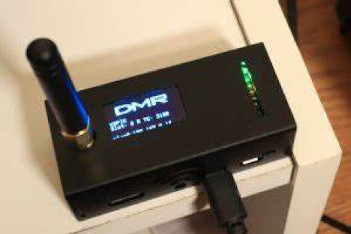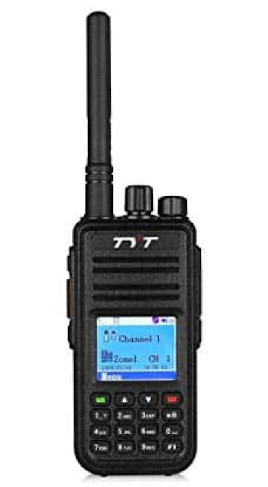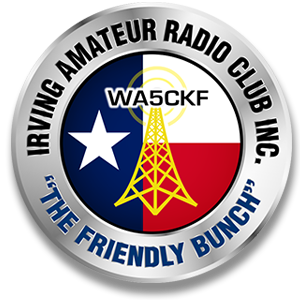
DMR Hotspot (Jumbospot)
For the month of May, I’m working on a special project I’d like to share with the club, I want to demonstrate DMR radio and walk the club members through the steps of building a hotspot of their own, configuring it, programming a DMR radio to use it, and help anyone interested in getting on the air thru DMR.
Briefly, DMR is a digital mode that uses “time division” to create two virtual communication channels in one narrow actual channel. The conversations on these “time slices” can occur simultaneously, so that at any one time, a repeater or hotspot can have two simultaneous channels of communication occurring, but only occupying one “narrow” channel.
DMR radios can simply talk to one and other locally (like 2 meter simplex), but the fun really happens when you bring in either a DMR repeater or a Hot Spot that supports DMR and is connected to the Internet. Once these repeaters are on the Internet they can join DMR Networks (like Brandmeister or TGIF), and using established “Talkgroups” (think party lines like we used to have on rural telephone networks) can communicate around the world without so much as an antenna on your house to upset your spouse, neighbors, or your HOA.
Of course, since the traffic between the repeaters and hotspots travel over the Internet, it isn’t really “radio” in the strictest sense, but if you like, it can be pushed closer to more traditional radio experience if you forgo the local hotspot and confine yourself to only using your DMR radio to talkover a public repeater. What you soon learn though, is that trying to share an over-subscribed DMR repeater can be, for various reasons, quite frustrating, because many/most repeater owners choose to put several “talkgroups” on the same time slice, causing the traffic from each “talkgroup” to block each other out, since only one “talkgroup” can be active on a given “timeslice” at any particular point in time. Imagine you want to listen/chat on the Worldwide English talkgroup, and another repeater user is engaged in a conversation on the “Texas Statewide” talkgroup, both of which are sharing “timeslice” one when the other “talkgroup” is transmitting, you cannot transmit nor can you receive any activity in your talkgroup. When you have a hotspot, it is effectively your own personal DMR repeater, and you control one “talkgroup” it connects to. Many/most DMR users quickly step up to a personal hotspot, the user experience is so much better, and the cost is fairly reasonable.

TYT MD-430 Single-Band DMR Radio ($40)
And speaking of cost, a frugal amateur can get a good single-band DMR handheld for around $85 (dual-band radios are just over $125) and operate not only in DMR but analog FM as well. Programming the radios is a bit more complex than the typical amateur radio handheld, but not significantly more complex as to make it hard for the average ham. In a nutshell the process is to create a digital contact for each talk group you want to access, then create a channel that links to the digital contact and contains frequency, time slice, and other channel attributes, and then collect up one or more of these channels and place them in a zone. Each zone can have a number of channels, and can properly be thought of as “memory banks” as you might use on an analog handheld or mobile.
The radios I’ll discuss will be the TYT MD-430, a small, 2 watt radio perfect for using with a hotspot, but really too underpowered to use with DMR repeaters over an RF link, and the TYT MD-380, a more traditional 5 watt single-band radio, but it is larger and more expensive ($40 for the MD-430

TYT MD-380 Single-Band DMR Radio ($85)
and $85 for the MD-380). To create a hotspot I’ll show you haw to start with a Jumbospot (a Chinese clone of the popular Zumspot available on eBay, Amazon, and Ali Express among other online retailers) kit that
includes an MMDVM radio board “hat,” an antenna, a tiny (0.96”) OLED display, and a metal case for about $40. You’ll also need a Raspberry Pi Zero W or WH (the W model requires some soldering, the WH removes the need to solder) for either $10 or $17, a small microSD card (about $5 at Microcenter), and microUSB power supply (a wall wart, a phone battery bank, or similar) for about $10. If you haven’t been doing the math, that puts your investment around $100-120 if you choose the “hot-spot appropriate” TYT MD-430, and just over $150 is you instead choose the more fully-featured TYT MD-380 HT.
If you are interested in working along with me, keep an eye out for an email from me in the next few days and we can possibly arrange a group buy of the needed items as a convenience, not necessarily to save money.
